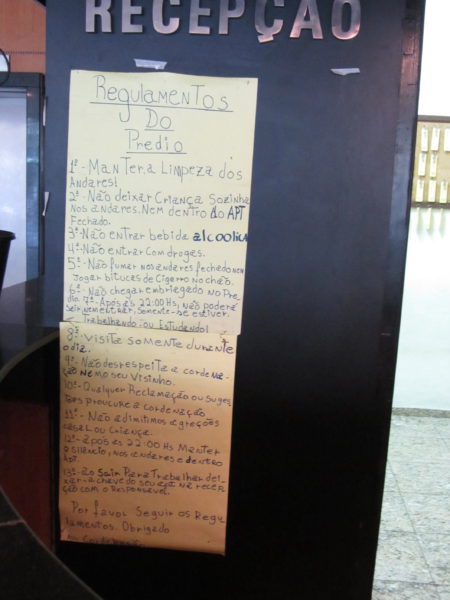São Paulo’s deadly housing crisis – no solution in sight

A building on fire in the city centre of Sao Paulo, and what follows is that same building falling to pieces, with people still inside.
The event is sadly predictable. In a city where thousands are homeless, hundreds of rundown buildings in the centre of São Paulo have been taken over by families: social movements coordinate occupations and organise life in these units. Some even have porters, curfew times, common kitchens and cleaning rotas. What these buildings lack, however, is public services, such as running water or electricity. Residents walk up and down multiple flights of stairs carrying their own water, and some rely on candles for their lighting. Many of the buildings have construction material lying around attracting rats, and others are literally falling apart.
Some questions need to be answered when the financial capital of Brazil has its city centre filled with such precarious housing units. So how come the centre of São Paulo, a transportation hub, is filled with rundown construction?
The answer to this question lies in Brazil’s extreme inequality and thirst for social distinction. Inter-class living was never popular in Brazil. In colonial times, class was separated by spaces in the house, with slaves and masters sharing the same house with very distinct spaces. In contemporary Brazil, upper class residents of São Paulo, as well as of other cities in the country, have abandoned city centres looking for private condominiums. These centres did not remain empty, with popular shops thriving in areas that still have a hybrid circulation of people during daytime. More recently, through the occupation movements, many families now call the abandoned hotels and residential units home.

Many of these buildings are privately owned. Some of them have been the focus of family disputes for many years and as such they linger unused. Others await private investment and a new owner. There have been many attempts to recover, regenerate, redesign (and all other “re”-movements) that central area, but they have all failed. A key source of tension is the proposed expulsion of the current residents, which is neither politically nor socially viable. There is a lack of social housing, which motivated the occupation of the buildings in the first place, and families would need to be relocated elsewhere. There is also a desire among these families to remain in the centre, where transportation costs are lower.
Other sectors of the city fear large regeneration schemes and indirectly support the rundown of the centre. There are many mansions in the city, islands of low density in a city with intense housing demands. To defend their territory, wealthier sectors oppose a broad discussion of the social use of houses. Some shop owners too may support the status quo. If there is a large movement to regenerate central areas in the city, then shop rents may increase.
But is it sustainable to occupy buildings falling to pieces? Can any maintenance work take place while families live in these units? What this latest incident reveals is that there is a tension between the residents in these buildings and the organisation of the occupying movement. While the larger picture of housing movements in São Paulo shows a deficit in social housing and many abandoned buildings (the latter being the solution to the former), families have reported that they are not always informed by their leaders of the risk they take when occupying such units. Having 100 families in a building certainly strengthens the movement, but how many people can such rundown buildings support?

In conversation with an engineer in São Paulo’s city centre some years ago, I was told that the owners of unoccupied buildings typically hire specialist companies to secure them against occupations. Because such occupations happen regardless, he concluded that the social movements must have access to sophisticated services to break into these properties. If this is the case, do these sophisticated services remain once the building is occupied or are resources withdrawn once the occupations occur? Can families be left to their own devices, or who should provide for them?
While homeless movements in São Paulo fight for central social housing, we need to consider the hidden hierarchies within housing movements and the availability of information and services for the families who participate in occupations. Furthermore, the role of the state in these situations must extend beyond evictions, to ensure the safety and dignity of all its residents – a basic right that, as the recent tragedy highlights, is now increasingly under threat.
All images are by the author.